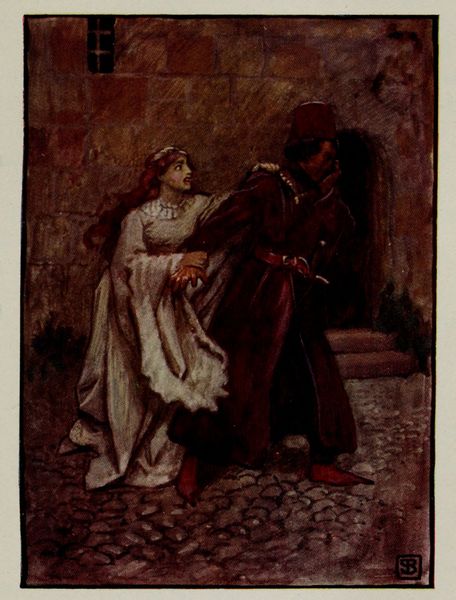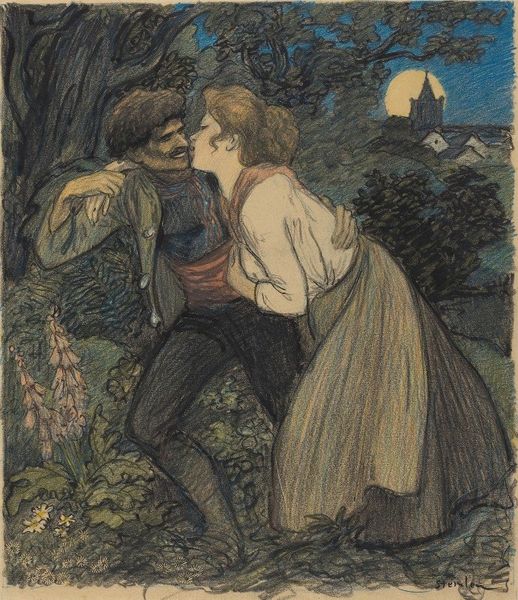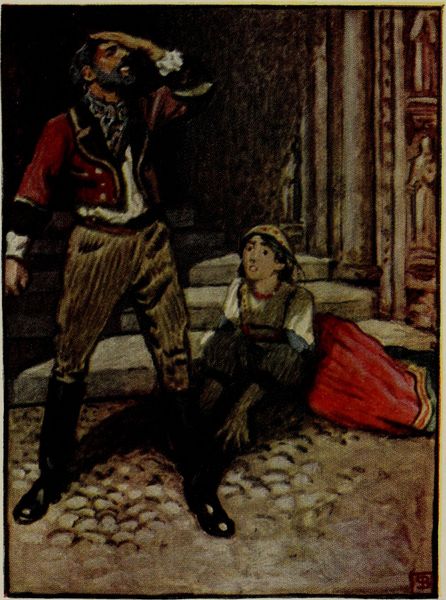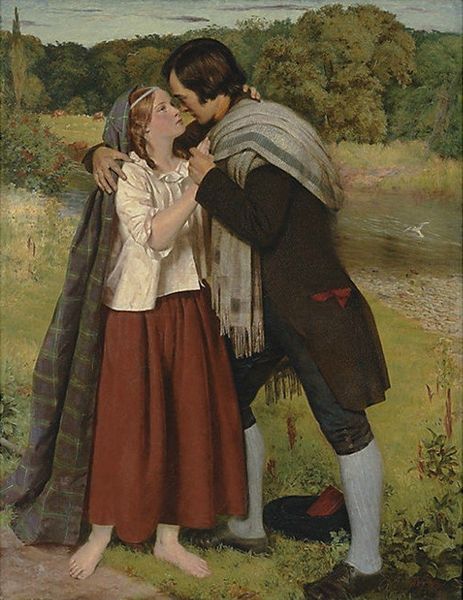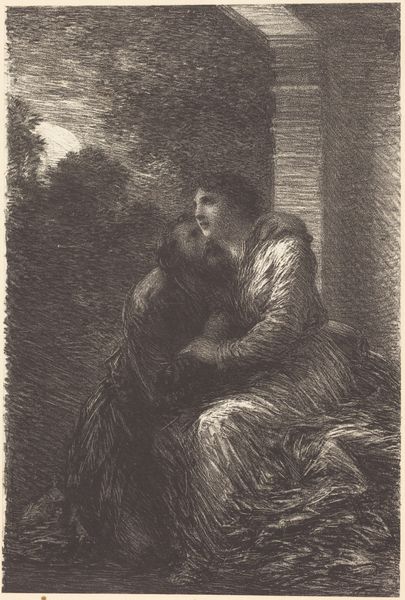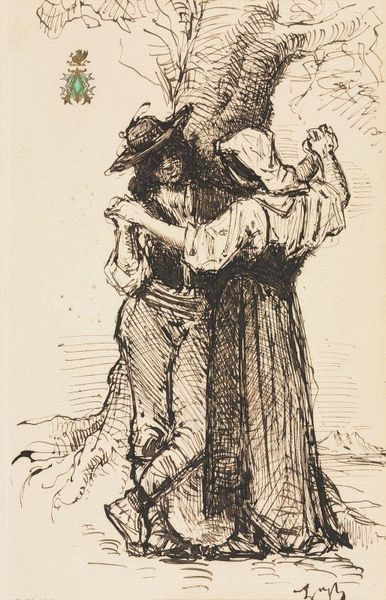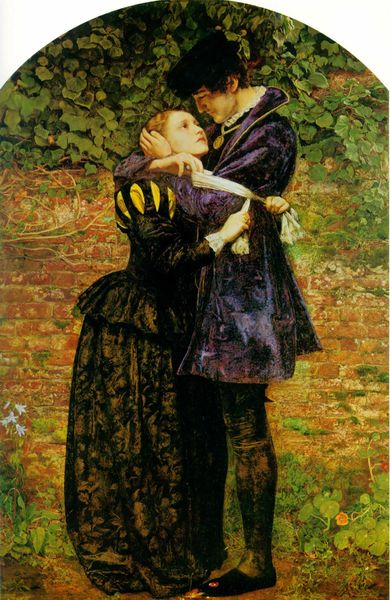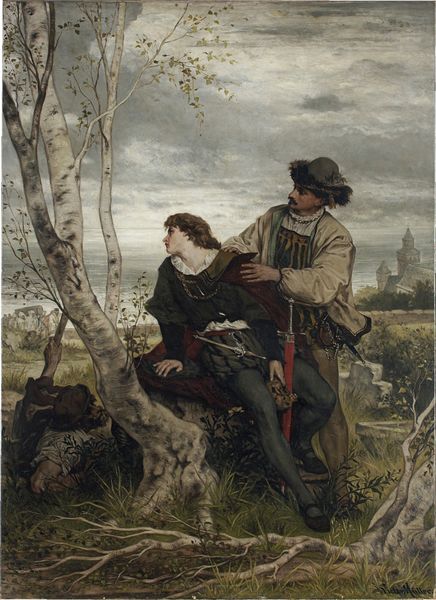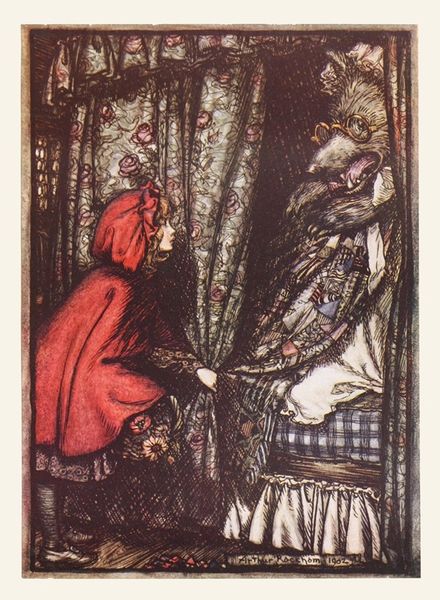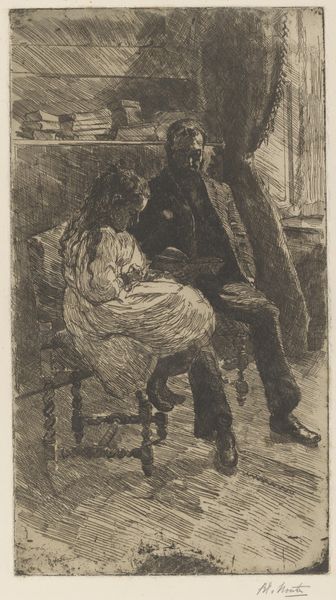
Copyright: Public domain
Editor: Here we have Byam Shaw’s "Pagliacci - 'Nedda and Her Lover'", painted in 1910. It's oil on canvas, and depicts a passionate embrace, but something about the shadowed background and furtive nature of the kiss makes me uneasy. What’s your read on this scene? Curator: The unease is palpable, isn't it? Shaw's work is deeply rooted in narrative and often unpacks complex social issues. Considering the title, referencing Leoncavallo’s opera, "Pagliacci", do you think it speaks to societal constraints placed on women, particularly within relationships? Think about the context of 1910, a period of burgeoning feminist movements but also deeply entrenched patriarchal structures. Editor: That's interesting. The furtiveness could reflect Nedda’s lack of agency in a restrictive society? Is the male figure representative of the constraints themselves? Curator: Precisely. His darker clothing, in contrast to Nedda’s lighter dress, can be read as symbolic of the dominating patriarchal structure, almost obscuring her individual desires. It asks us to consider what freedoms are denied, and at what cost. What does the setting--the wagon--evoke for you in terms of themes like travel or class? Editor: A transient life? Perhaps commenting on the limited options available, particularly for women in certain social classes. Their destinies seemingly already mapped out. Curator: Yes, this work provides a critical lens for examining social norms. The beauty of Shaw’s romanticism is cleverly masking commentary on issues of freedom, love, and societal expectation, wouldn't you agree? Editor: Absolutely! I hadn't considered all the social underpinnings, but understanding that, it transforms from a simple romantic scene into a potent commentary. Curator: It’s a beautiful yet unsettling look at social structures that impacted lives, and in some ways, still do.
Comments
No comments
Be the first to comment and join the conversation on the ultimate creative platform.
